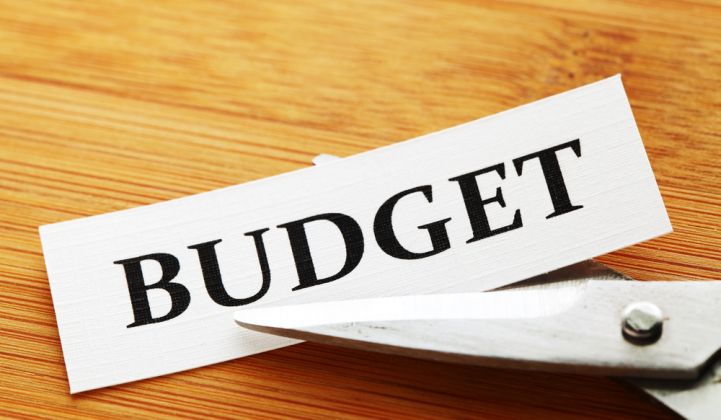President Trump unveiled a controversial budget blueprint last week that seeks to boost defense spending by $54 billion, and slash non-defense spending by the same amount -- affecting several key clean energy programs.
The Environmental Protection Agency would see the biggest budget cuts of any government agency under Trump's plan, falling by 31 percent or $2.6 billion. As a result, the EPA would have to shed approximately 3,200 of its 15,000 employees.
The proposed budget also “discontinues funding for the Clean Power Plan, international climate change programs, climate change research and partnership programs, and related efforts,” according to the blueprint.
The Department of Energy would see a 6 percent budget decrease, including a $900 million, or 20 percent cut to the Office of Science, which supports more than 300 universities and 10 of the 17 U.S. national labs. Trump has also proposed to eliminate the Loan Programs Office, which invests in the deployment of innovative clean energy technologies, as well as Advanced Research Projects Agency-Energy (ARPA-E), a widely supported program designed to progress early-stage energy technology.
For many, the budget is disappointing and even dangerous. Democrat House Minority Leader Nancy Pelosi called Trump’s plan a “systemic deconstruction of the federal government and its role.”
But the proposal still has to be approved by Congress. And how it will all shake out for clean energy may be a matter of perspective on the broader role of government, as Democrat and Republican energy policy experts explained in GTM's latest Facebook Live interview.
For Brandon Hurlbut, partner at the advisory firm Boundary Stone Partners and former chief of staff for Energy Secretary Steven Chu, the budget is simply “terrible.” Hurlbut pointed out that the 6 percent DOE budget cut is actually much larger when you look specifically at the impacts on non-defense programs. About two-thirds of the DOE’s budget is related to the U.S. nuclear weapons program. Trump’s budget blueprint increases spending on nuclear weapons by about 11 percent, and cuts everything else by about 18 percent.
"Everything else" includes fundamental research conducted at the national laboratories, as well as applied energy programs at the Office of Electricity Delivery and Energy Reliability, the Office of Nuclear Energy, the Office of Fossil Energy Research and Development, and the Office of Energy Efficiency and Renewable Energy.
“That’s a pretty drastic reduction in investments we could make in basic science and things that have been bipartisan in the past, and the foundation of the innovation machine our economy relies on,” said Hurlbut. It’s also a drastic reduction in government spending on “this new energy economy,” he said.
For Shane Skelton, founder of the consulting firm S2C Pacific and former energy policy advisor to Paul Ryan, Trump’s budget isn’t as extreme as some make it out to be. For one thing, the $54 billion in budget cuts and commensurate defense spending increase is tiny when compared to the $4 trillion the U.S. government is expected to spend this year, according to the Congressional Budget Office. The worrisome part is where, exactly, the budget cuts end up taking place, said Skelton, who characterizes himself as a true all-of-the-above energy supporter.
“I’m of the mind more money isn’t always the better solution, so I think the numbers alone shouldn’t alarm any of us,” he said. “What’s concerning is that the budget says it’s going to focus on basic R&D and not as much on commercialization and market readiness, but some programs zeroed out focus on basic R&D and not commercialization. I think that’s concerning as far as a marker of where this budget’s priorities are…because I’m not sure how you perform basic R&D without programs and offices that focus on basic R&D.”
“The commercialization side, I would posit, is much better suited to the private sector, and I’m not too concerned about a couple of billion dollars at the Office of Energy Efficiency and Renewable Energy that won’t be spent on commercializing technologies,” he continued. “At this point, I think the global community and business community has sent a pretty clear signal that climate change is real and it’s something they’re concerned about. […] Whether or not your government is going to combat it isn’t going to change the way global private equity firms behave, equity firms behave and pensions behave.”
“There is going to need to be a focus on combating climate change, but I think the focus of this budget is whether it’s coming from taxpayer dollars or from industry,” said Skelton.
Listen to the full conversation with Brandon Hurlbut and Shane Skelton in our ongoing Facebook Live series on the implications for clean energy under the Trump administration. Follow Greentech Media on Facebook for more.



